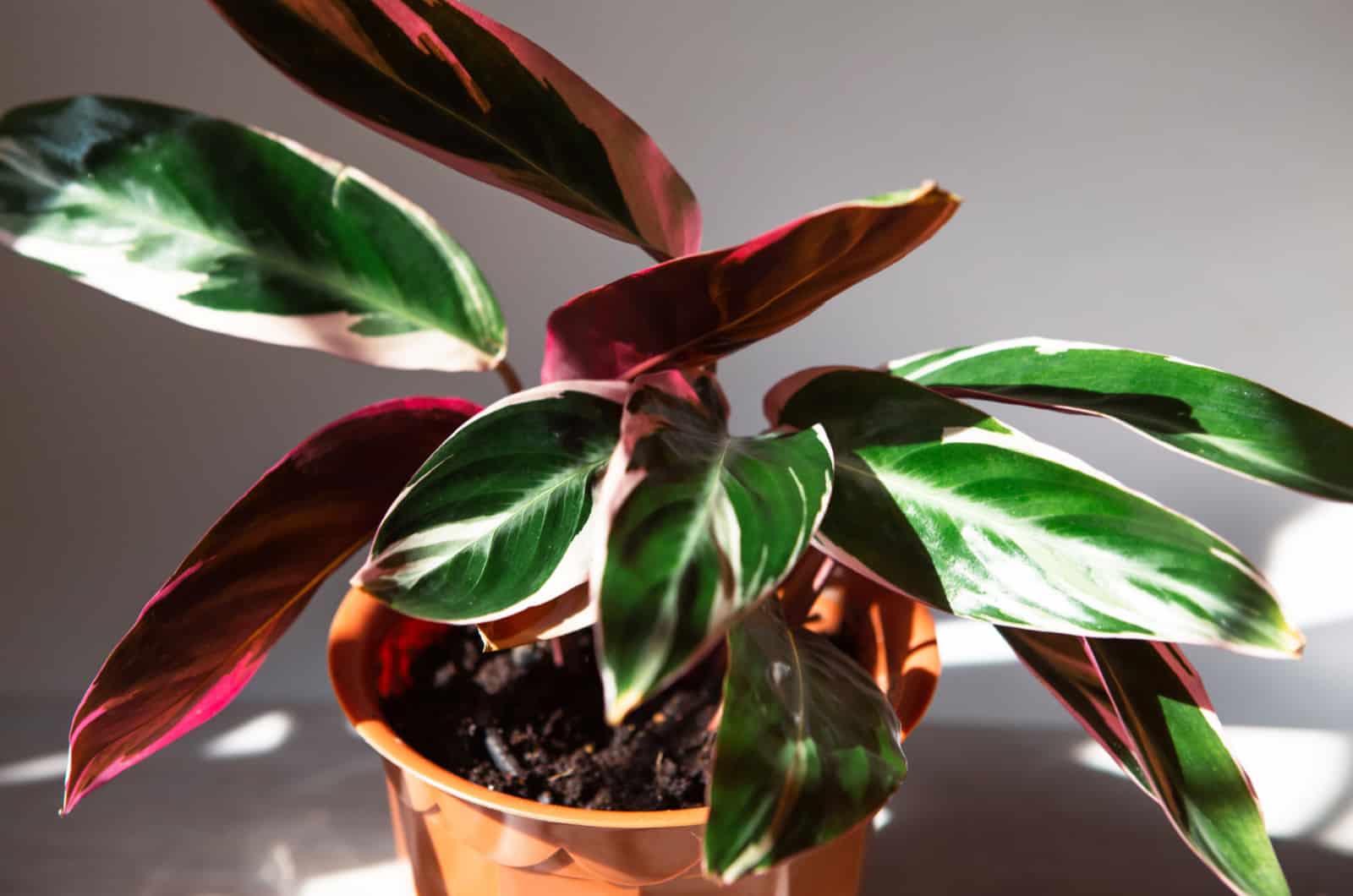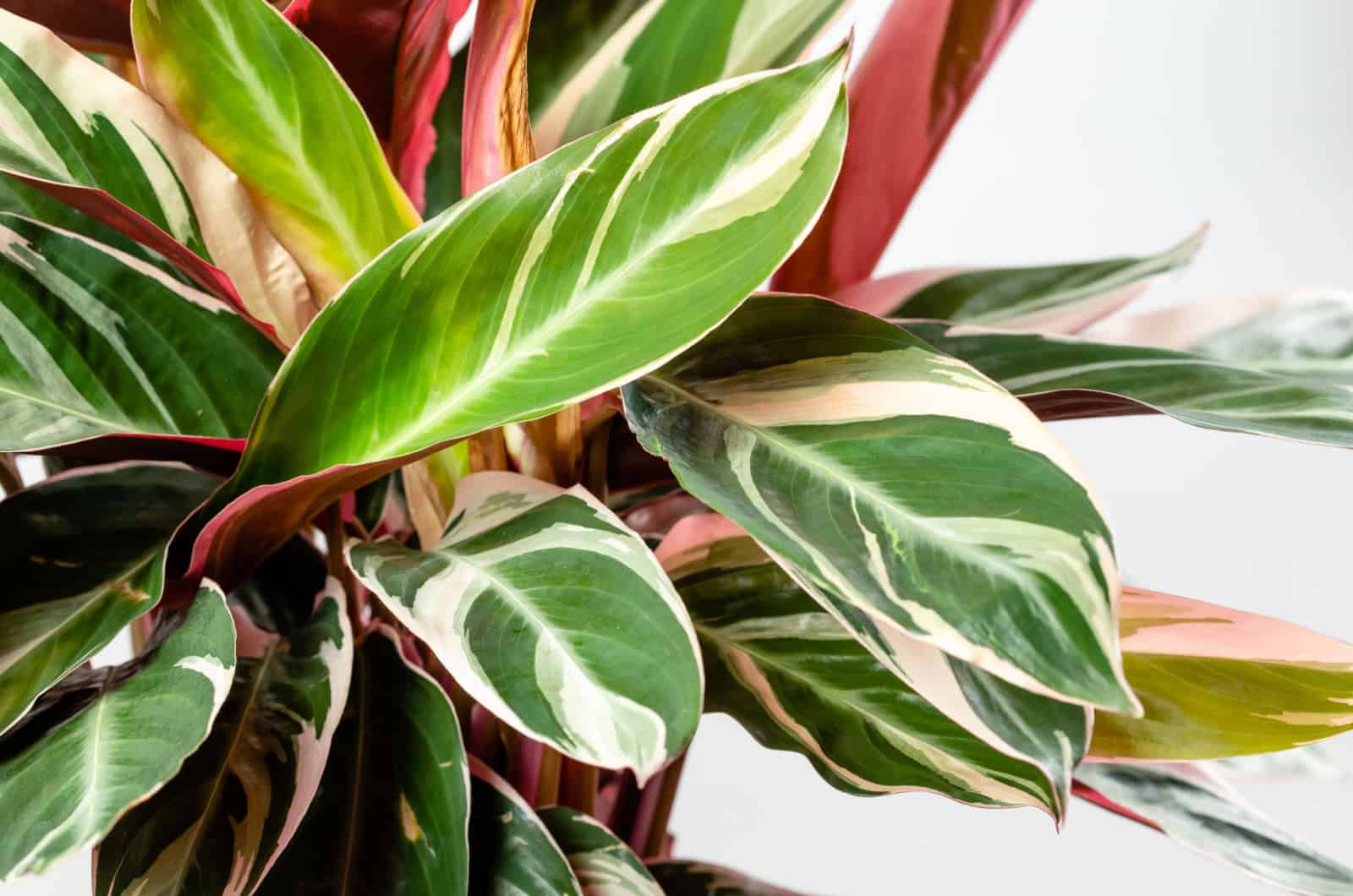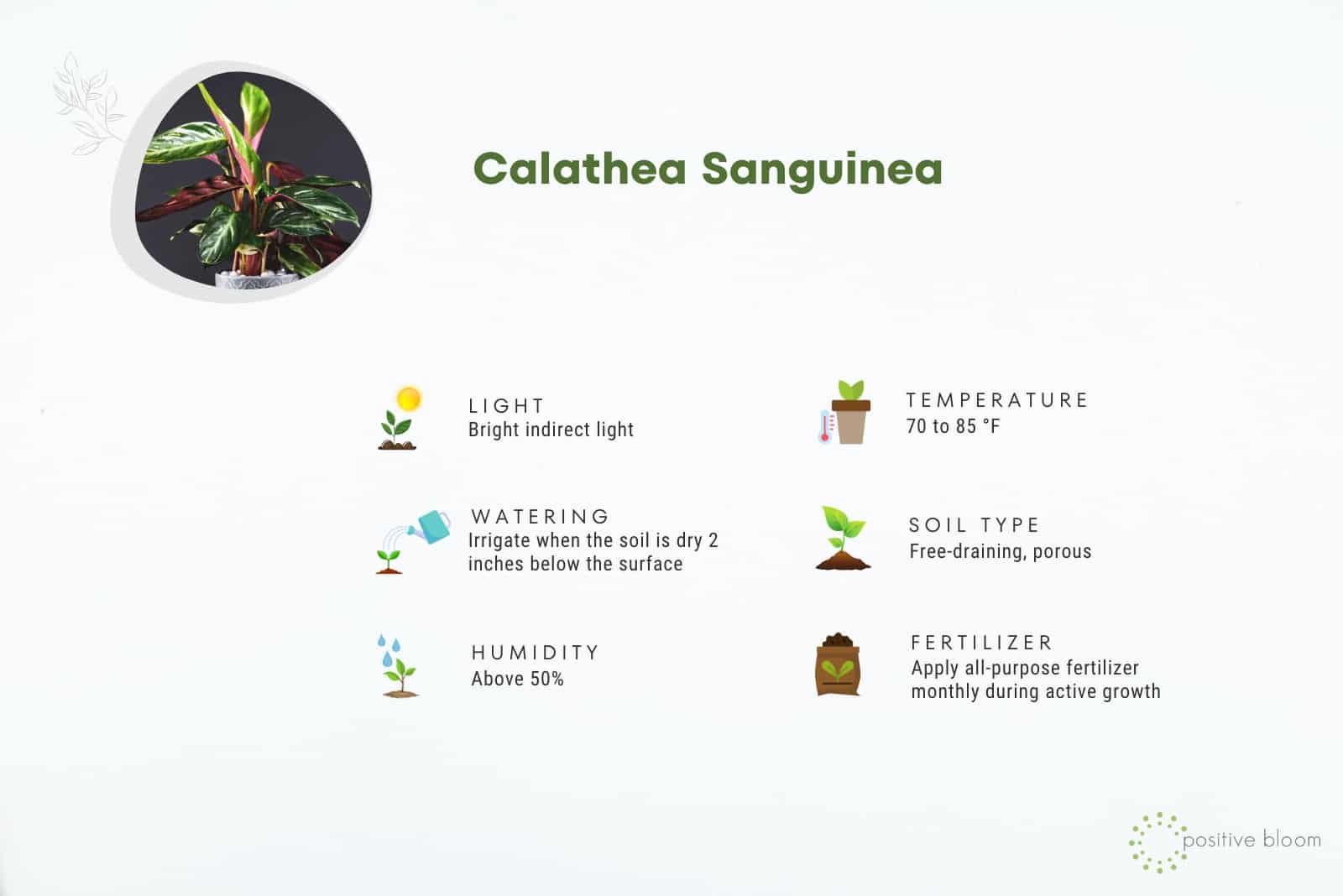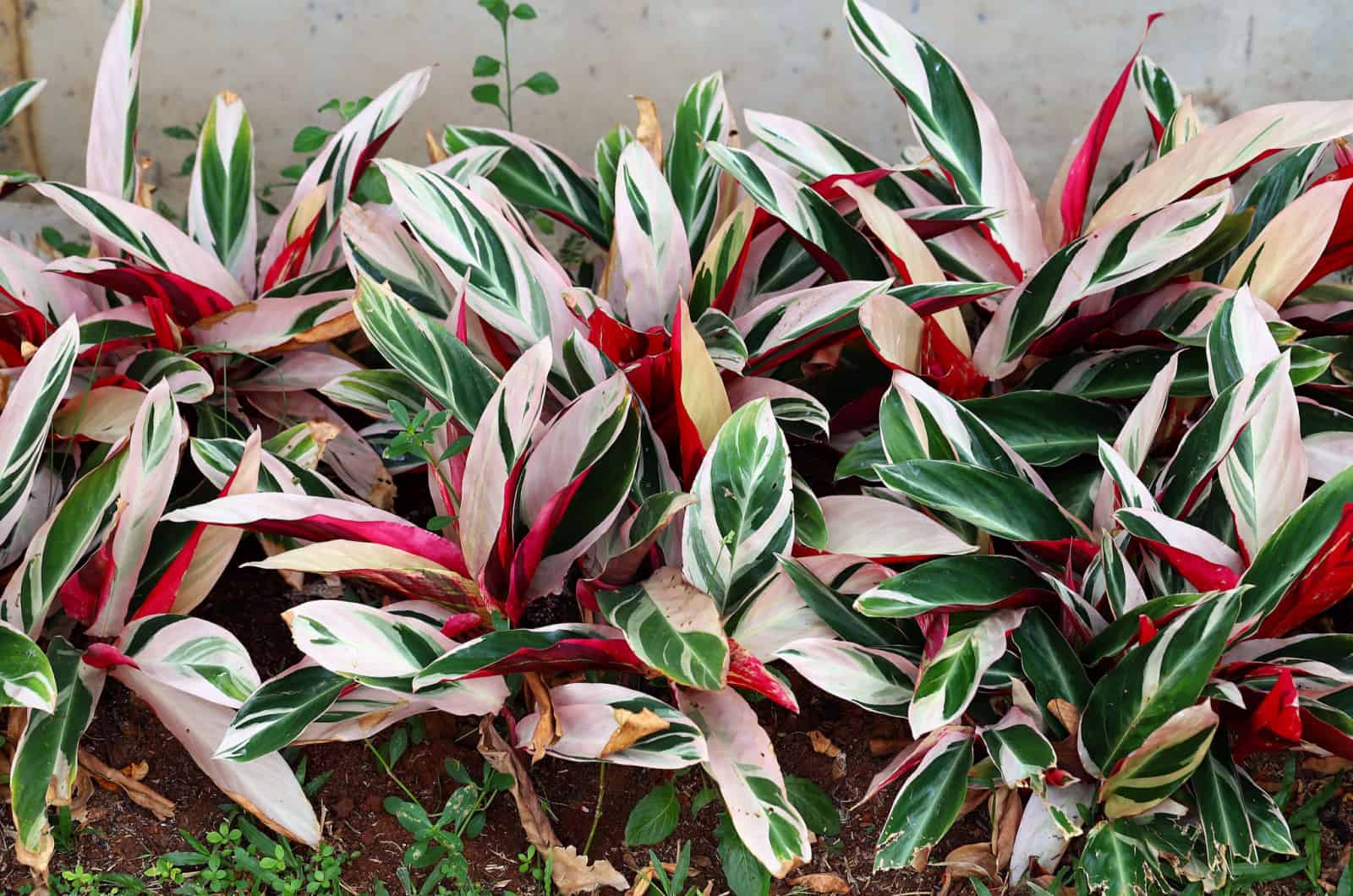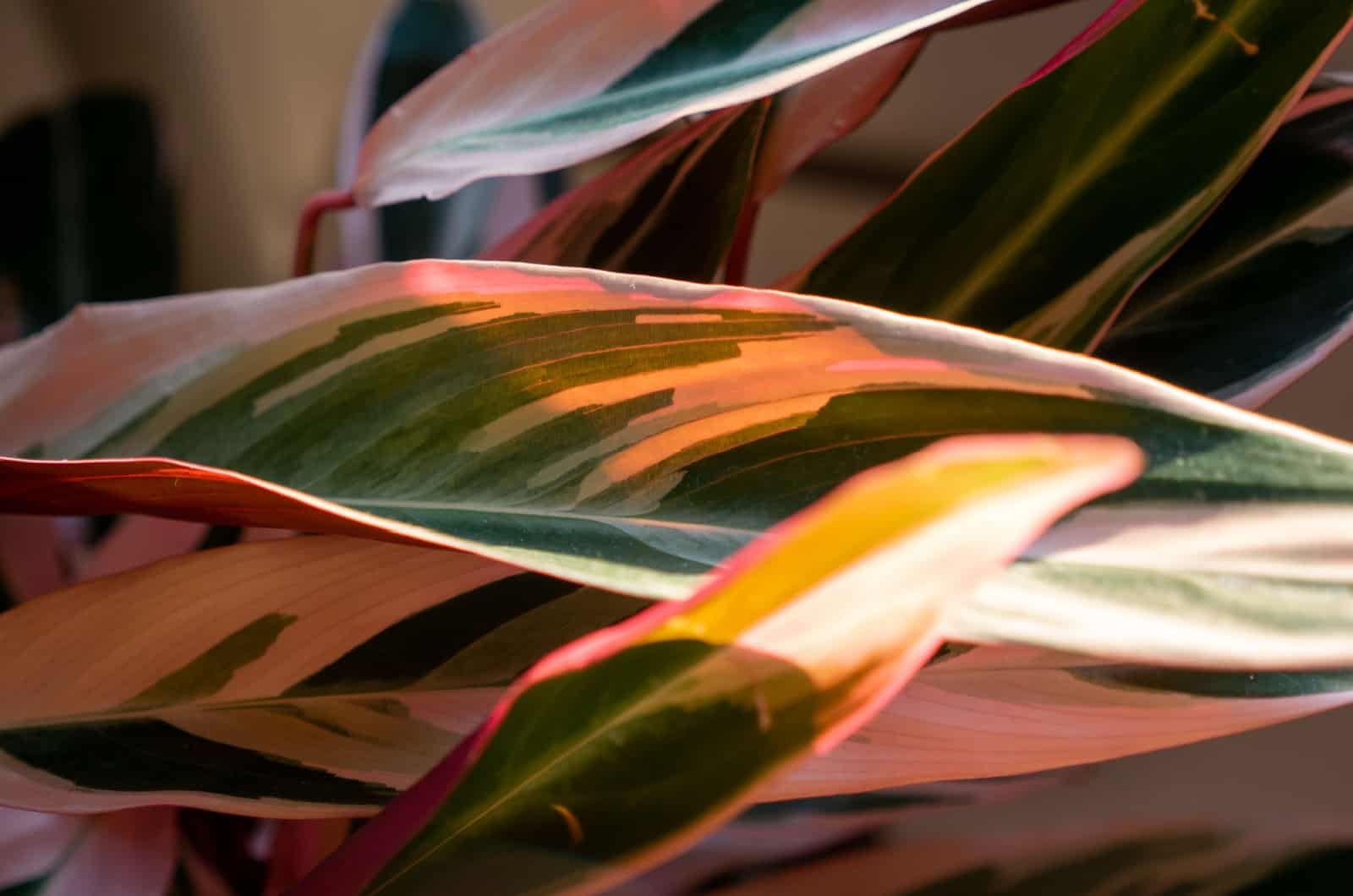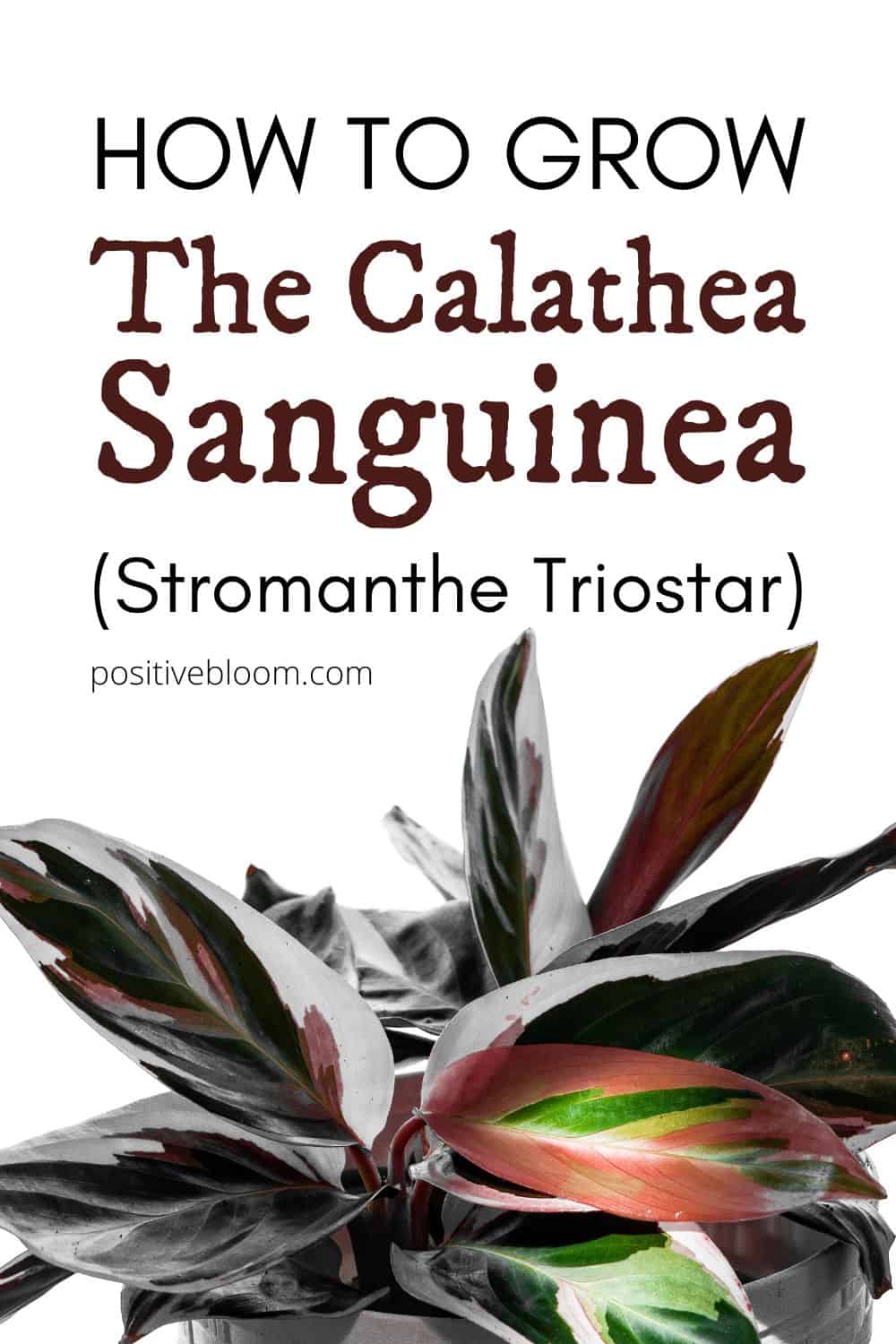Tropical plants are frequently grown as houseplants, and they are almost all easy to maintain.
However, some plants need more attention than others and won’t thrive unless all their requirements are met.
In this article, I’ll tell you more about the Calathea sanguinea, a plant that needs lots of attention. This is one of the most beautiful plant species in the world, so it’s definitely worth it!
Before we get to all that, let’s learn some general information about this houseplant:
| Family | Marantaceae |
| Genus | Stromanthe |
| Scientific name | Stromanthe sanguinea ‘Triostar’ |
| Plant type | Herbaceous, perennial |
| Native habitat | The Brazilian rainforests |
| Size | Approximately 2-3 feet tall |
| Growing season | Spring and summer |
| USDA hardiness zone | 10-12 |
Calathea Sanguinea Care Guide
Stromanthe sanguinea care is a bit more time-consuming than caring for a plain-old cactus, but once you lay your eyes upon its beautiful variegations, you’ll forget about your troubles.
However, inadequate care can lead to a drooping prayer plant, so ensure you expose it to indirect light, water it once the top inch of soil dries out, and plant it in a well-draining potting mix.
Let’s discuss all Stromanthe sanguinea plant requirements in detail!
Light Requirements
If you want your tricolor Calathea to flourish, you must ensure it gets a lot of bright indirect light. This light level is essential if you want to preserve variegation.
Low light may affect a plant’s growth and cause it to lose variegations. On the other hand, direct sun may cause sunburns and curling of the leaves.
Inadequate light levels will change the watering needs of your Stromanthe plant and cause additional problems.
Temperature & Humidity Requirements
This Stromanthe plant does best when cultivated at temperatures between 70 and 85 degrees Fahrenheit. Your tricolor plant may grow in slightly lower temperatures, but cannot withstand temperatures below 60 degrees Fahrenheit.
Avoid keeping your tricolor plant near AC vents, heaters, and drafty windows because these locations experience temperature fluctuations that can stress the plant.
The Triostar plant is hardy to USDA growing zones 10 through 12.
Humidity
The Calathea tricolor originates from a humid environment, so you should ensure high humidity for this plant to thrive.
You can raise humidity levels by misting but if you don’t have enough time to spray this plant every couple of days, or you’re simply forgetful like I am, you can always invest in a humidifier. It will quickly make your home a high-humidity environment.
Soil
Porous and well-draining soil is the type of potting soil for the Calathea sanguinea. If the potting soil doesn’t drain well, your Triostar plant may get overwatered quickly.
Regular potting soil might not be the best choice for your plant. You can get a properly amended substrate from your local nursery, or you can mix some peat-based potting soil with pumice or perlite to improve its drainage.
Water Requirements
This plant is really fussy about the watering schedule, the water quality, and the water temperature.
The key to a perfect watering schedule for a triostar plant is waiting until the top inch of soil dries out.
The Stromanthe sanguinea plant won’t tolerate even a short period of drought! You will need to water it less if the temperatures are slightly lower, but the soil must always be moist.
If you add too much water, you’ll face an even bigger issue. Overly wet soil causes root rot, and your Stromanthe will start dying if you don’t react.
Tap water isn’t the best choice for the triostar plant. You can use distilled water, although rainwater is good for plants as well.
Fertilizing
Proper stromanthe triostar care includes feeding this plant every once in a while, and the good news is that you can use any houseplant fertilizer; you just have to dilute it in water!
Fertilize your S. sanguinea once a month during its growing season, and stop feeding it once it enters dormancy.
Always water your plant immediately before or after fertilizing it to prevent fertilizer burn.
Repotting
You don’t need to repot your Sanguinea plant very often. Once the roots start poking out from the drainage holes, put your plant in a new pot with fresh soil.
Find a planter one or two sizes bigger than the previous one, partially fill it with aerated and well-draining medium, place your stromanthe in it, and backfill it with more substrate.
After repotting, water your plant thoroughly and place it in bright light.
How To Propagate The Stromanthe Sanguinea Plant
The best way to propagate this prayer plant is by using the rhizome division method. This plant propagation method gives great results and won’t take much of your time.
When separating the rhizomes, you must first take the plant out of its container and clean the roots to expose them.
Try to pull the roots apart as gently as you can. If it isn’t possible to divide the rhizomes by hand, use a sharp and sterilized knife.
When separating the plant’s roots, try to cause as little damage as possible.
Once you’ve successfully divided the rhizomes, you can pot both plants into fresh soil and water them thoroughly.
Keep the plant in indirect light, water it whenever the top inch of soil dries out, and maintain high humidity levels.
Once you notice new growth, you can be 100% sure the propagation was a success!
Here are some more tips for dividing the Stromanthe sanguinea:
Calathea Triostar: Common Problems
Unfortunately, the triostar plant may get infected with certain diseases and attacked by pesky bugs. There are ways to deal with these issues and even avoid them!
You can learn all about it in the sections below!
Pests
First, we need to get one thing straight; not all insects are harmful to your plants. For instance, there are certain varieties of soil mites that help with decomposition, make the soil more fertile, and improve the absorption of nutrients, etc.
Insects such as spider mites and aphids feed on your plants and can even kill if you ignore them.
Therefore, you should separate an infested stromanthe as soon as you catch a glimpse of these nuisances so that they don’t spread onto your other plants.
Then, either introduce their natural predators, such as ladybugs, to get rid of the pests for you, use horticultural oils to remove them, or resort to pesticides if the infestation gets out of control.
Diseases
The most common disease that affects this gorgeous tricolor is root rot, which is mainly caused by inadequate care and overwatering.
This means you can easily prevent it! But if you still notice certain symptoms, such as leaf discoloration, droopiness, and little-to-no growth, you should immediately inspect the roots.
Take the plant out of its pot, remove the dirt, and carefully wash away the remnants of the growing medium to completely expose the roots.
If they are dark, soft, and overall unhealthy, you should remove them and then spray the rest of the roots with a fungicide to prevent fungi from appearing again. Place the plant in new soil afterwards.
Make sure to water your stromanthe only when the topsoil begins to dry!
Facts About The Stromanthe Sanguinea ‘Triostar’
There are many common names for the Calathea sanguinea, such as Stromanthe triostar, Stromanthe sanguinea, Tricolor stromanthe, and Calathea tricolor.
But the plant isn’t actually Calathea; the scientific name is Stromanthe sanguinea ‘Triostar’ which means the plant belongs to a different genus, Stromanthe.
The Tricolor stromanthe originates from the deep rainforests of Brazil, and it belongs to the prayer plant family known as Marantaceae.
Other common plant species in this family include Calathea fasciata, Calathea rosy, and Fishbone prayer plant.
Growth Habit
This Brazilian native has an upright and bushy growth habit, so it’ll look perfect in decorative planters.
It has a short stem that extends underground, from which the plant’s root system spreads (this underground stem is called a rhizome).
Therefore, the best way to propagate this plant is by rhizome division, but we’ll discuss that later on.
Foliage And Flowers
The most striking thing about this plant is its foliage. The upper side of the green leaves is splashed with creamy or baby-pink variegations, while the pink undersides clad the stromanthe triostar in royal colors.
The leaves are thick, glossy, and lance-like. They arise from the crown of the plant held on pink stems.
Furthermore, the stromanthe ‘Triostar’ can also blossom, and if you’re lucky, you can admire pink or white panicles wrapped in orange-red bracts that resemble short tubes.
Sometimes the stromanthe triostar plant can produce blossoms if you grow it in a special greenhouse that perfectly mimics its native conditions.
Wrapping Up
The stunning Calathea sanguinea leaves everyone who sees it speechless. The plant is fussy about care requirements, but it will undoubtedly thrive once you learn the basics.
If you are a beginner gardener, you might want to try some other houseplants with low care requirements before you start growing the Stromanthe triostar plant.
Until next time!
Like this post? Share or pin it for later!

